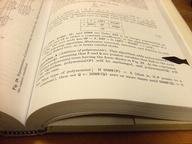Quiz Answer Key and Fun Facts
1. The poem 'Recognition' is a dramatic monologue.
2. What is the name of the poem that mentions a character named Winston, whose name "was in the paper"?
3. In the poem "Psychopath", which three iconic American figures are directly referred to by name?
4. In "Stealing", what is the most unusual thing the man "ever stole"?
5. Which of the following poems from "Selling Manhattan" was inspired by a painting by Max Ernst?
6. In the poem "Big Sue and Now, Voyager", which two time Academy Award winning actress does Big Sue pretend to be "Most evenings", with the "curtains drawn"?
7. In the poem "Telegrams", "C" is a male?
8. In "Warming Her Pearls", at what time does the servant intend to place the pearls around her mistress's "cool, white throat"?
9. The poem "Dies Natalis" centres around the idea of reincarnation. But what exactly does the word 'dies natalis' translate to in English?
10. In the poem "Lovesick", the "red and shining apple" is a metaphor for what?
Source: Author
poshprice
This quiz was reviewed by FunTrivia editor
MotherGoose before going online.
Any errors found in FunTrivia content are routinely corrected through our feedback system.
